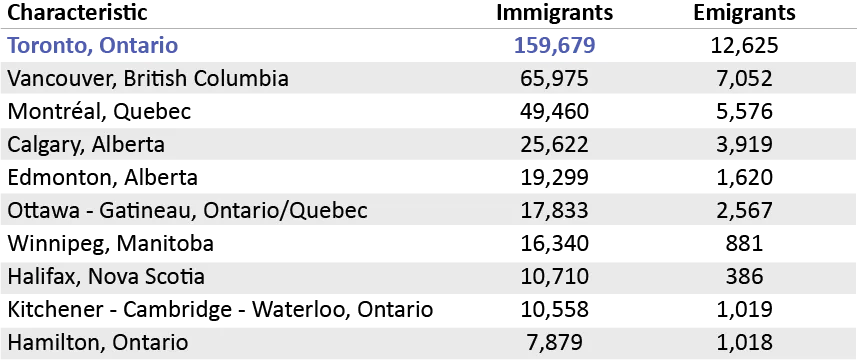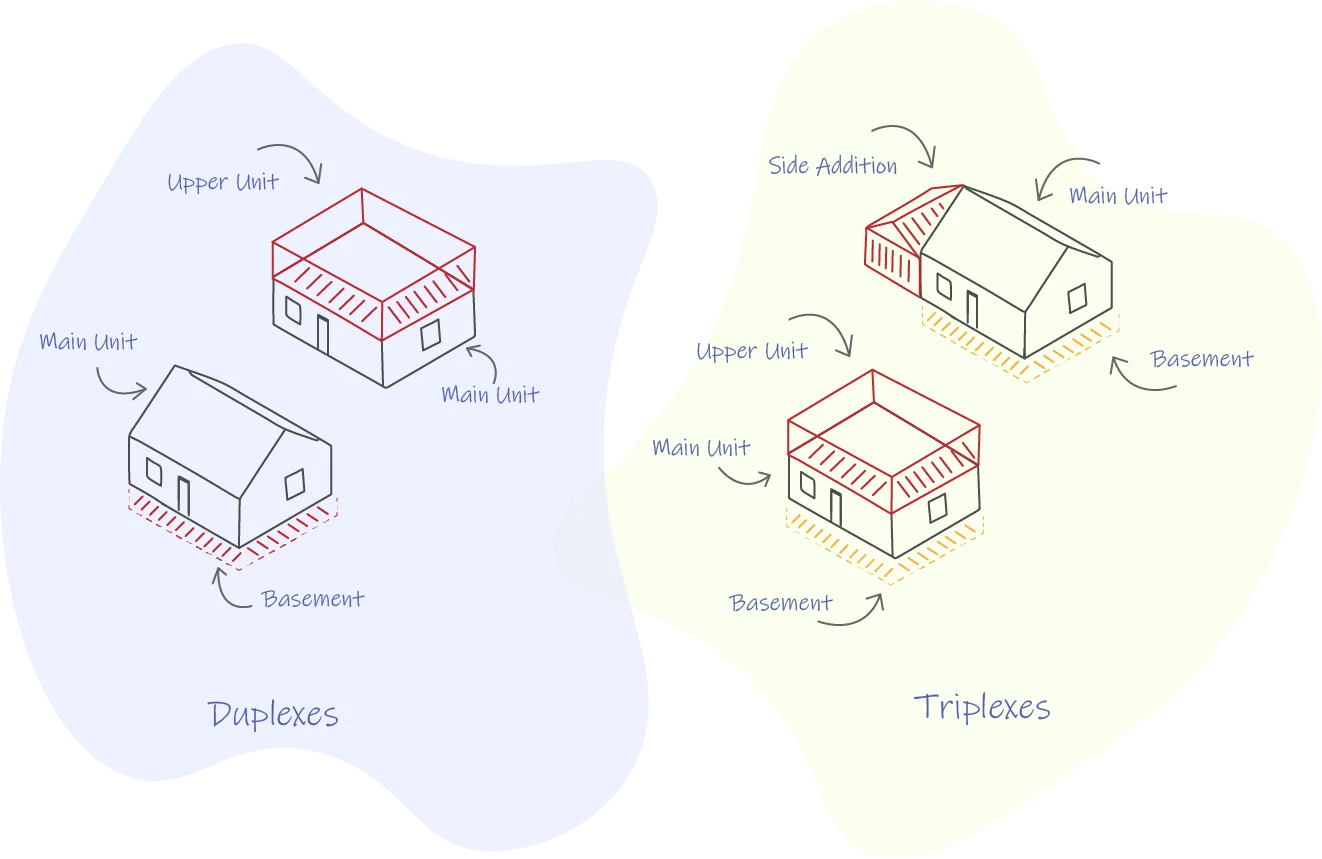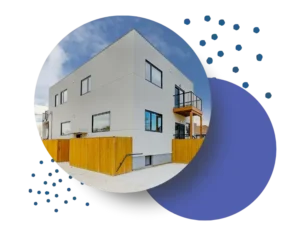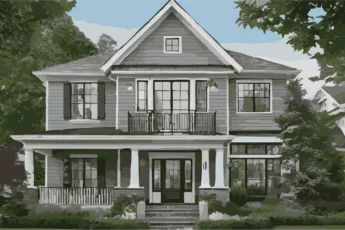In the ever-evolving landscape of Toronto’s real estate, the rise of multiplex homes is a beacon of opportunity for property investors. Defined as multi-unit buildings, multiplexes are set to play a crucial role in bridging the housing supply gap.
Demographic Reality: Immigration Plans Set at 500,000 Annually Until 2026
Immigration is a fundamental driver of Canada’s population growth, accounting for nearly 100% of its labor force expansion. Approximately 75% of the nation’s population growth is fueled by immigration, particularly in the economic category.
In response to this demographic reality, Canada’s Immigration Levels Plan establishes an ambitious target of welcoming 500,000 new immigrants annually in the coming years. This substantial figure underscores the enduring demand for housing.

In 2021, the number of immigrants coming only to Ontario represented 198,437 (48.9% of the total number of newcomers in the country). In 2022, Toronto alone saw a total of 159,679 people immigrating, as reported by Statista.

All further information on this statistic can be found at Statista
Therefore, the government has implemented a variety of housing policies and plans, with a focus on addressing the growing need for housing. These initiatives aim to guarantee that the immigrants they attract are provided with suitable living arrangements.
By encouraging the construction of purpose-built rental properties, the government stimulates real estate development and ensures that the housing market can keep pace with the demographic shifts brought about by immigration.
You might be interested: LandLord Chosen as Top Property Management Company for 2024
The Construction of Multiplexes in Toronto
Historical Roots
To understand the history behind multiplex development, it is necessary to look back at Toronto’s history. Multiplexes gained popularity over 50 years ago, particularly during the 1930s and 1940s—a period dominated by the Great Depression and World War II.
Homeowners, driven by the need for financial stability, frequently converted their properties to generate income. At that time, the city, faced with different circumstances, permitted such adaptations without requiring explicit permission.
Regulatory Shifts and Contemporary Perspectives
However, with the introduction of new regulations, the city subsequently required a more formalized approach to multiplex development. This regulatory change included restrictions on constructing apartment buildings on many residential streets, reserving them exclusively for single-family homes.
In the present day, extensive studies conducted in collaboration with the University of Toronto’s architecture school have led to a consensus. Multiplexes are recognized for their potential to accommodate additional units while seamlessly integrating with the established physical scale and development patterns of neighborhoods.
In the current housing crisis era, multiplexes are once again emerging as a viable and adaptive solution for the evolving needs of the housing market.

Multiplex Design and Units– Some Options – LandLord
Zoning by-law amendment
To facilitate multiplex construction, the City Council created the by-law amendment 474-2023 to amend the Zoning By-law 569-2013. The amendment aims to improve the feasibility of multiplex construction, simplifying the approval process by reducing number of steps required to get a permit, speeding up processes and exempting multiplexes from certain regulations.
Conversion Opportunities for Landlords
The recent zoning bylaw amendment opens up new opportunities for both property owners and investors. In response, landlords are strategically embracing multiplex development to unlock a variety of benefits that cater to specific needs.

Multiplex Construction – Some Design Options – LandLord
Benefit I: Mitigating the Impact of Rising Interest Rates
With interest rates on the rise, property owners face the challenge of increased financial strain for mortgage payments, leading to uncertainty and potential instability. Multiplex development provides a practical response by diversifying rental income streams through multiple units within the same property.
This not only acts as a financial cushion against the impact of rising interest rates but also enhances adaptability to market fluctuations, ensuring a more resilient investment.
Benefit II: Ensuring Steady Income for Retirement
As property owners plan for a secure financial future, especially in the context of retirement, multiplex development emerges as a reliable source of steady income.
The revenue generated from multiple units within the property forms a diversified and consistent financial foundation, providing property owners with peace of mind as they approach their retirement years.
The steady income stream from a multiplex property serves as a robust safety net, contributing significantly to long-term financial security.
Benefit III: Maximizing Returns through Multiplex Development
Multiplex properties, with their multiple units, inherently have the capacity to generate more rental income than a single-family home. This increased earning potential arises from the ability to accommodate multiple tenants within a single investment, capitalizing on the growing demand for diverse housing options.
As a result, property investors can seize opportunities to maximize returns and optimize the financial performance of their real estate investment portfolio.
Benefit IV: Mitigating Rental Vacancy Risks
Another noteworthy benefit of multiplex development is the ability to mitigate the impact of rental vacancies. With multiple units, property owners are less vulnerable to the complete loss of rental income if one unit becomes vacant.
This resilience ensures a more stable and consistent cash flow, reducing the risk of missed opportunities for returns that may arise from extended periods of vacancy in a single-family rental property.
You might be interested: Real Estate Insights & Emergent Trends 2024
Leveraging Incentives for Multiplex Construction
In a strategic move to promote multiplex development, the city has introduced enticing incentives for landlords, creating a favorable environment for property owners and investors.
Under the Development Charges By-law, landlords can benefit from a development charge exemption for the second, third, and fourth units on a residential property (up to 4 units). This exemption serves as a catalyst for constructing multiple units without incurring additional charges, encouraging the expansion of housing options.
On the federal level, the Canadian government, led by Justin Trudeau, recently announced initiatives aimed at fostering multiplex construction to address housing needs. A notable incentive includes the Harmonized Sales Tax (HST) exemption for purpose-built rentals with a minimum of 4 units.
Furthermore, the Goods and Services Tax (GST) Rental Rebate on new purpose-built rental housing is increasing from 36% to 100%. It is important to note that this specific adjustment will be applicable to projects commencing construction on or after September 14, 2023, and concluding construction by December 31, 2035
The anticipated outcome is a substantial increase in the housing market, with tens of thousands of new rental units expected to alleviate the current housing shortage.
While the duration of these incentives remains uncertain, the current window offers landlords a unique chance to enhance financial stability through the construction of residential multiplexes.
Crucial Considerations: Permits and Legalities in Multiplex Property Investments
Effectively navigating the real estate landscape demands caution, especially when considering the purchase of a pre-existing 2+ unit multiplex rather than opting for new construction.
To mitigate these risks, it’s imperative for investors to diligently request and confirm specific zoning requirements before committing, adding a crucial layer of due diligence to the investment process. Here a few items that you should pay attention to:
- Are There Existing Legal Units?
- One Or Two Layers of Ceiling Drywall?
- Public Or Private Stairs? Correct Size?
- Emergency Lighting – Where and When?
- Exit Signs – Where and When?
- Fire Alarms and Pull Stations – Where and When?
- Two Exits – Where and What Size?
- Rooms And Windows – What Size? – Understand the Required ‘glazing’ Area.
- Room Ventilation – How Much? – Natural Or Mechanical?
- Are There Separate HVAC For All Units?
- Extending Existing Setbacks – Which Zones? What Conditions?
- Wood Decks Setbacks? Correct Size?
Recognizing that the legality of multiplexes is contingent on specific zoning permits – it’s essential to understand that not every property with 2+ units qualify as a multiplex. Meticulous attention to legal requirements is vital for a seamless and secure real estate transaction.
Design and Build Profitable Multiplexes With LandLord
A successful multiplex development project requires a reliable team, including a realtor, a designer, a construction manager, and a property manager. At LandLord, we pride ourselves on offering a comprehensive team that covers all these aspects, ensuring a well-rounded and successful outcome for your project.




